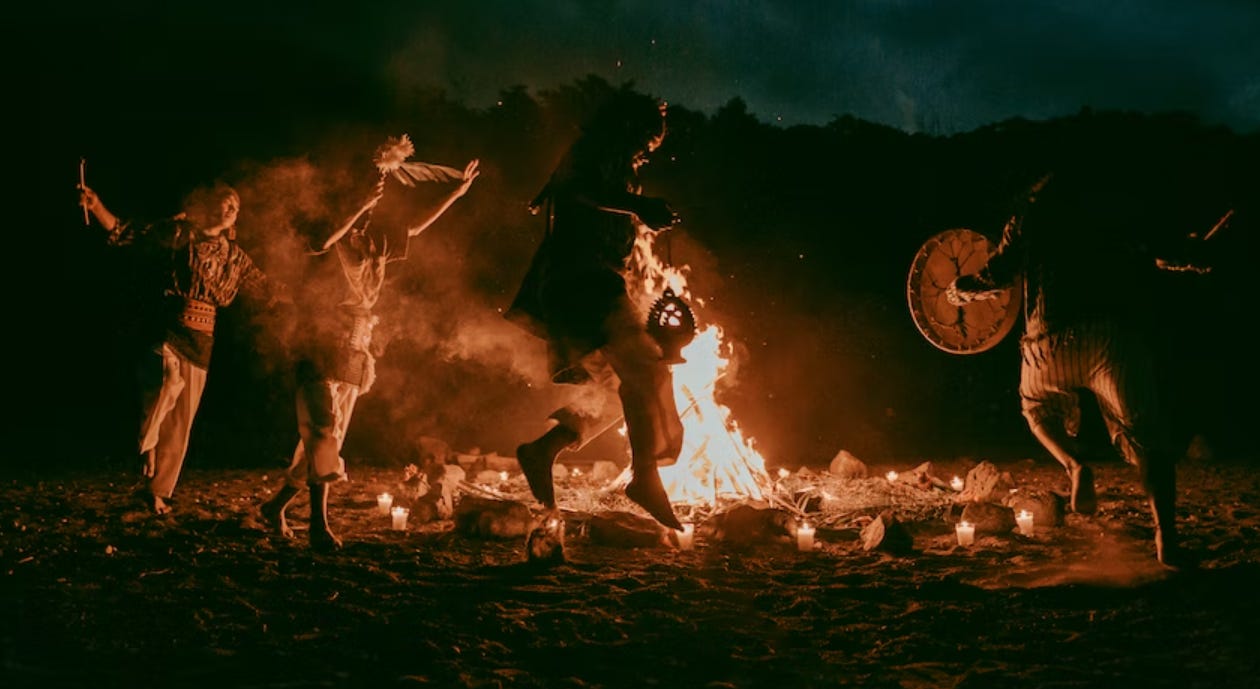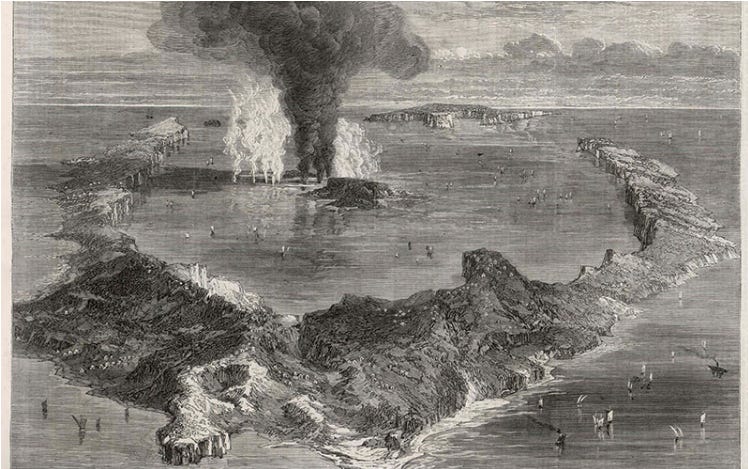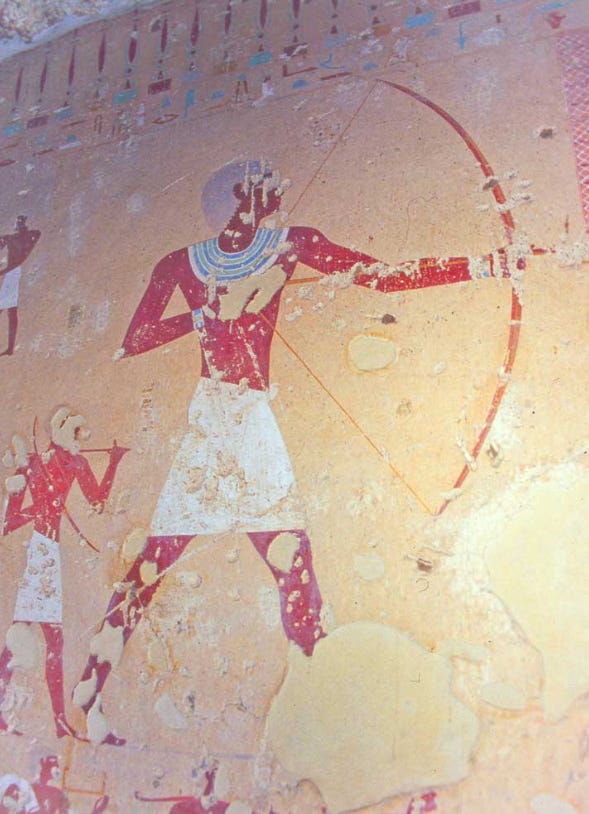Oil from the Heavens
Did a comet in the time of the Exodus contribute to the oil reserves that we exploit today?

Summary
Oil may have been formed from the tail of a comet that came into contact with the Earth many millennia ago.
Ancient civilizations have left us numerous accounts of petroleum-like substances falling from the heavens.
In the time of the Exodus, people wrote accounts of a ‘fire rain’ and ‘sticky vapor’ bringing mass death and destruction in its wake.
The substance remained for a long time, some apparently seeping deep into the ground.
The consistency of such accounts between different people around the world is striking.
The parts of the world from where such phenomenon were described correlate well with places that are now known to have significant oil reserves.
Background
Following on from my previous article about another ‘alternative’ oil formation theory (Abiotic Oil), here I describe a theory that has it’s origins high above our heads!
This piece is largely based on research contained within Worlds in Collision by Imanuel Velikovsky. I have included as footnotes references to the original texts to which Velikovsky himself referred.
Note: Upon it’s release in 1950, Worlds in Collision was met with rejection and censorship by the scientific publishing community. Velikovsky’s work has, nonetheless, provided a rich source of inspiration for many scientists, cosmologists and historians over the years.
1. A Cataclysmic Event breaths Fire onto the Earth
Velikovsky believed that a large comet came into close contact with the Earth around the time of the Exodus, somewhere between one and two thousand years before the birth of Christ.
Velikovsky offers an explanation behind the formation of oil from this cataclysmic event as follows:
‘The tails of comets are composed mainly of carbon and hydrogen gases. Lacking oxygen, they do not burn in flight, but the inflammable gases, passing through an atmosphere containing oxygen, will be set on fire. If carbon and hydrogen gases… enter the atmosphere in huge masses, a part of them will burn, binding all the oxygen available at the moment; the rest will escape combustion, but in swift transition will become liquid. Falling on the ground, the substance, if liquid, would sink into the pores of the sand and into clefts between the rocks…’ Velikovsky, 1950
2. The Rain of Fire
Falling ‘sticky fluid’ that burnt with a ‘heavy smoke’ is described in the oral and written traditions of the inhabitants of both hemispheres as described below.
Mayas
(Present day southeast Mexico, Guatemala, Belize, W Honduras and western El Salvador)
Popul-Vuh, the sacred book of the Mayas, narrates:
‘…it was a great inundation… people were drowned in a sticky substance raining from the sky… the gloomy rain endured days and nights. …And then there was a great din of fire above their heads.’’ Popul-Vuh1
The entire population of the land was, in Velikovsky’s words, ‘annihilated’.

Mexico
The Manuscript Quiche describes the Mexican population perishing in a downpour of bitumen (heavy oil):
‘There descended from the sky a rain of bitumen and of a sticky substance. …The earth was obscured and it rained day and night. And men ran hither and thither and were as if seized by madness.’ Manuscript Quiche2
Siberia
The Voguls (later known as the ‘Mansi’ people) carried down through history this memory:
‘God sent a sea of fire upon the earth. …The cause of the fire they call ‘the fire-water’’’ Siberian Mythology3
East Indies
(Present day East Malaysia, Indonesian Archipelago, Philippine Archipelago, and New Guinea)
The aboriginal tribes recorded that in the remote past ‘Sengle-Das’ or ‘water of fire’ rained from the sky.
With very few exceptions, ‘all men died’4.
Egypt
The eighth plague as described in the Book of Exodus was:
‘‘fire mingled with barad (meteorites), very grievous, such as there was none like it in all the land of Egypt since it became a nation’’ (Exodus 9:24)
‘‘[There were] thunder and barad, and the fire ran along upon the ground’’ (Exodus 9:23)
The Midrashim, in a number of texts, state that naphtha (‘petroleum’ in Aramaic and Hebrew), together with hot stones, poured down over Egypt:
‘‘The Egyptians refused to let the Israelites go, and He poured out naptha over them, burning blisters’’5

Iraq
In the valley of the Euphrates the Babylonians often referred to ‘‘the rain of fire’’ as being still vivid within their memory6.
3. ‘The Great Conflagration’
For a period of time after the ‘fire rain’, Velikovsky proposed that it floated upon the surface of the ground and seas, catching fire repeatedly causing more death and destruction.
Siberia
The Voguls of Siberia narrate (1):
‘‘For seven winters and summers the fire has raged.. it has burnt up the earth’’ Siberian Mythology7
Egypt
The Biblical story of the wandering in the desert contains a number of references to fire springing out of the earth, for example:
‘‘the fire of the Lord burnt among them, and consumed them’’ (Numbers 11:1)
Referring to the revolt of Korah and his confederates, when they lit their incense, the vapors which rose out of the rock caught fire and exploded:
‘‘And there came out a fire from the Lord, and consumed the two hundred and fifty men that offered incense’’ 8.
Velikovsky proposed that if oil fell upon Egypt, evidence of fire must be in some of the ancient tombs into which it (or its flammable derivatives) might have seeped.
Such evidence is described, for example, in the description of the tomb of Antefoker, a pharaoh of the Middle Kingdom:
‘‘…for a fierce fire which speedily spent itself seems alone able to account for the fact that tombs so burnt remain absolutely free from blackening, except in the lowest parts; nor are charred remains found as a rule. The conditions are puzzling’’ The Tomb of Antifoker9

Continuing fires in Siberia, the Caucasus, the Arabian desert and elsewhere were also recorded following, in Velikovsky’s words ‘the great conflagration of the days when the earth was caught in vapors of carbon and hydrogen’.
Into the Heights Rose Man!
I hope you have found these accounts as thought-provoking as I did. Here are some questions that I found myself asking:
Does the chemistry of hydrogen and carbon vapors burning and/ or liquefying in our oxygen-rich atmosphere make sense?
What if these ancient people did actually witness vast quantities of bitumen falling from the sky.. where did it go?
What should we make of the fact that similar stories were told from people completely separated by culture, language and geography but from the same period of history?
Is it just coincidence that many of the regions from which these stories came are now known to have significant oil reserves today?
I will conclude with more of Velikovsky’s brilliant words:
‘‘In the centuries that followed, petroleum was worshiped, burned in holy places; it was also used for domestic purposes. Then many ages passed when it was out of use. Only in the middle of the last century did man begin to exploit this oil, partly contributed by the comet of the time of Exodus. He utilized its gifts and today his highways are crowded with vehicles propelled by oil. Into the heights rose man and he accomplished the age-old dream of flying like a bird: for this too, he uses remnants of the intruding star that poured fire and sticky vapor upon his ancestors.’’
Thanks for reading!
-T
Popul-Vuh, le livre sacre: ed. Brasseur (1861), Chap. III, p. 25.
Brasseur: Histoire des nations civilisees du Mexique, I 55.
Holmberg, Finno-Urgic, Siberian Mythology, p. 368.
Ibid., p. 369. Also A. Nottrott: Die Gosnerische Mission unter den Kohls (1874), p. 25. See R. Andree: Die Flutsagen (1891).
Midrash Tanhuma, Midrash Psikta Raboti, and Midrash Wa-Yosha. For other sources see Ginzberg: Legends, II, 342-343, and V, 426.
See A. Schott: Die Vergleiche in den Akkadischen Konigsinschriften, Mitt. d. Vorderasiat. Ges. XXX (1925), 89, 106.
Holmberg, Finno-Urgic, Siberian Mythology, p. 368.
Numbers 16:32-35. Cf. Psalms 106:17-18.
N. de Garis Davies: The Tomb of Antefoker, Vizier of Sesostris I (1920), p. 5.



